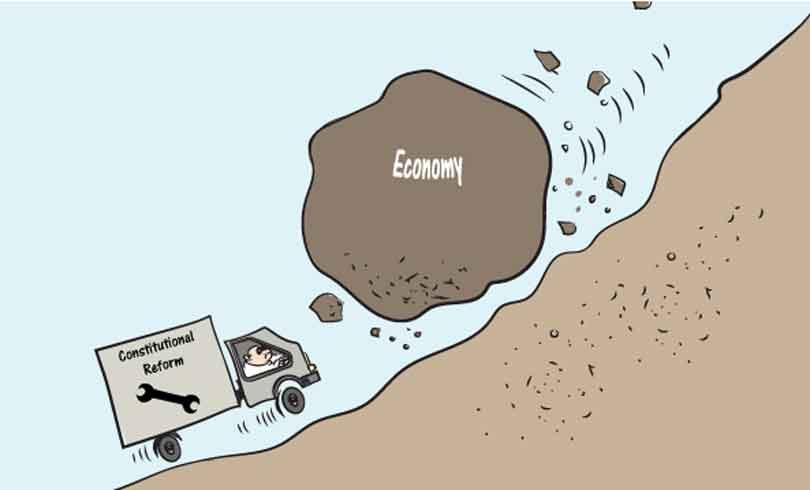Reply To:
Name - Reply Comment

Media reports say that the draft 22nd Amendment (21st Amendment if enacted) is to be debated in the Cabinet today. They also claim that the current draft is different from the 22nd Amendment prepared under the instructions of former President Gotabaya Rajapaksa. Interestingly, both drafts were prepared by the same Justice Minister and he who justified the earlier draft will also explain the basis for the new draft as well.
It is ironic that the Gotabaya Rajapaksa government that enacted the 20th Amendment in October 2020, had to initiate a process to do away with it and bring back the provisions of the 19th Amendment which his government scrapped some 20 months ago. It is even ironic and in a way it is interesting to note that a group of Parliamentarians who voted to the 20th Amendment are also going to vote for the proposed Constitutional Amendment.
Besides, the fact that some of the MPs who had voted for the 17th, 18th, 19th and 20th Amendments which alternately negated each other, are going to vote for the latest Amendment would give a meaningful reflection for the people on their representatives. At the same time, the same leaders who twice took away the powers awarded to Parliament and strengthened the hands of the executive President through 18th and 20th Amendments, are putting their heads together today to strengthen the parliament. Though they do so under pressure, it is encouraging.
Despite these contradictions, the 22nd Amendment has been drafted apparently to address the socio-economic and political crisis the country is currently faced with. The idea to bring in back the provisions of the 19th Amendment is meant to meet the demand for “system change” by the youth who rebelled against the current political system through their agitation or the “Aragalaya” since late March this year. Hence, if it is enacted, one might say that the “Aragalaya” has not gone down the drain, though it was silenced by a military crackdown, permanently or temporarily.
It was former President Maithripala Sirisena who was mainly instrumental in introducing the 19th Amendment in April 2015, mooted the idea to bring it back this time as well. In April this year he proposed to form an all-party caretaker government under which a Constitutional Amendment to strengthen the Parliament has to be introduced. A desperate President Gotabaya Rajapaksa who was embattled by multiple crises hurriedly grabbed it and went even further claiming that he was prepared to abolish the executive Presidency, if needed. Thus came the current process for Constitutional reform to the fore.
However, the original demand in 2015, as well as this time, was to totally scrap the executive Presidency. Politicians who initially agreed to it in 2015 watered it down later, citing various issues. They introduced the 19th Amendment in 2015 which was far short of abolition of executive Presidency, claiming that a referendum is needed to abolish it. Then some of the pro-Parliament Articles in the Amendment were dropped upon the instructions of the Supreme Court while changes needed to be made in order to garner support from the UPFA, which was the biggest party in Parliament then.
President Ranil Wickremesinghe as the Prime Minister then steered along with President Sirisena the campaign for the passage of 19th Amendment which considerably pruned the powers of the President. It would certainly be interesting to see how the 22nd Amendment has been drafted under his guidance, as he is holding those powers now, as the President of the country.
Yet, the immediate issue that the country is faced with now is the economic downturn which has turned the lives of the people upside down. Hence, it is not clear how the proposed Constitutional Amendment would help resolve the current economic downturn, despite it being relatively democratic than the 20th Amendment which is currently in force.